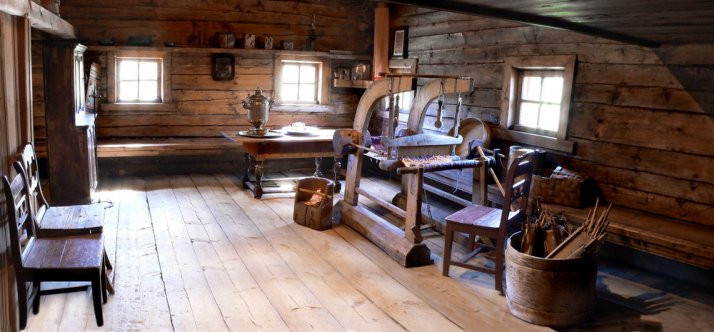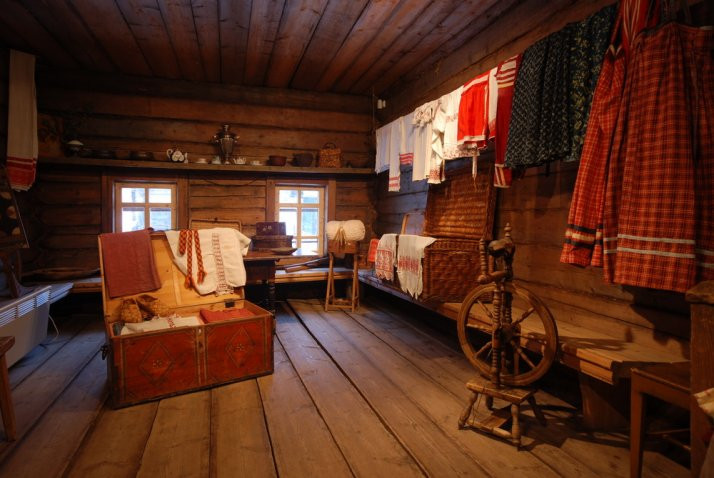Traditional Peasants’ Occupations. Flax- Processing. Weaving
A. E. Bolotova House dates back to the early 19th century. It is decorated with wood carving. The expositions are mostly dedicated to such women’s occupations as flax processing, weaving, embroidering, and lace-making.
The exhibition of “Traditional Peasants’ Occupations. Flax- Processing. Weaving” is shown here.
“You sow the flax and you reap the wealth,” they used to say in the old northern villages. Flax had been dressing the entire family. After the harvest, the handy housewives would start to process flax: slave it, comb it, and spin it. They would bring weaver looms in and hand-weave, watching carefully after each thread, so that neither one would be torn apart or kinked, or fall under the bench. The interior of the house tells about the traditional methods of flax working and accompanying it ceremonies.
Also, the exhibition “A Maiden Dowry” in shown in the Bolotova house.
A girl’s life in a peasant’s family was quite unrestricted if the girl was laborious and dexterous, if she was taught to do the homework. It was an honor and respect to marry such girl. Usually, young men would engage with a girl who “hand-weaves more than others.” The girl was expected to weave and decorate the fabric. The exposition introduces visitors to wedding and engagement traditions of the Vologda Region, various types of woven dowries and the hard woman’s life to live after the wedding. Men chose brides, who could spin more yarn and decorate it better than others.
Excursion duration: 40 minutes – 1 hour.
Number of group: to 30 people.
Cost per person:
Preschool children - 30 rub.
Children - 50 rub.
students, pensioners, disable persons - 75 rub.
Adults - 150 rub.


